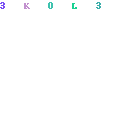Hotmelt cements are thermoplastic materials which get liquefied by heat so they can be applied as cement. Hot liquefy cements are applied by hand held paste firearms onto a surface which is expected to be fortified with another surface. They are a mainstream decision for modern applications because of them being prudent; having a broad time span of usability; being dissolvable free and non-harmful; and shaping a moment bond inside a moment. The glues are applied by either splashing or beading onto the ideal surface with a paste weapon. They are produced in stick or cartridge structure. Hot soften glues are strong thermoplastics which are: warmed inside the paste firearm to change state to a fluid and afterward applied to one wanted surface. The other surface which is planned to adhere to the first is then adhered to the glue.
The glue at that point comes back to a strong after cooling – shaping a solid, dependable bond. This is the reason the time between use of the glue and staying the articles together must be negligible; the shorter the time the more grounded the bond. This time among application and holding of items is known as the open time. Open time additionally relies upon the warmth of the cement on application. Open time likewise gauges the time until the Hotmelt cement never again has a holding impact. Open time is estimated in a flash and can be anything from a couple of moments as long as 1 moment.

Open time by and large falls into three classes:
- Short: 1-15 seconds
- Medium: 15-30 seconds
- Long: 30-60 seconds
Distinctive hot liquefy cements are intended to have different thickness levels; this is estimated by a viscometer. The consistency is the straightforwardness wherein the fluid streams; as the temperature rises, the thickness of the glue decreases. The units wherein consistency is estimated are Centipoises cps. Consistency is likewise commonly classified by 3 classes. Lower thickness cements 500 – 3000 cps increment stick firearm yield because of the simplicity of stream of the fluid. They additionally structure more grounded bonds and decline hanging. They are not reasonable, anyway for penetrable surfaces, for example, materials and froths.
Medium thickness glues 3000 – 6000 cps have a less amazing bond quality than lower consistency glues yet a more noteworthy bond quality than higher thickness contactlijm. The progression of the hot soften stick is not as free as lower thickness glues so an all the more dominant paste firearm might be required. Higher thickness cements 6000 – 15000 cps are suitable for holding unpleasant and spiked surfaces because of them being less liquid than medium or lower consistency cements. They are suggested for surfaces that require more holes filling. Higher thickness glues require the most dominant paste firearms of the three, because of their fluid stream being the least simple of all.